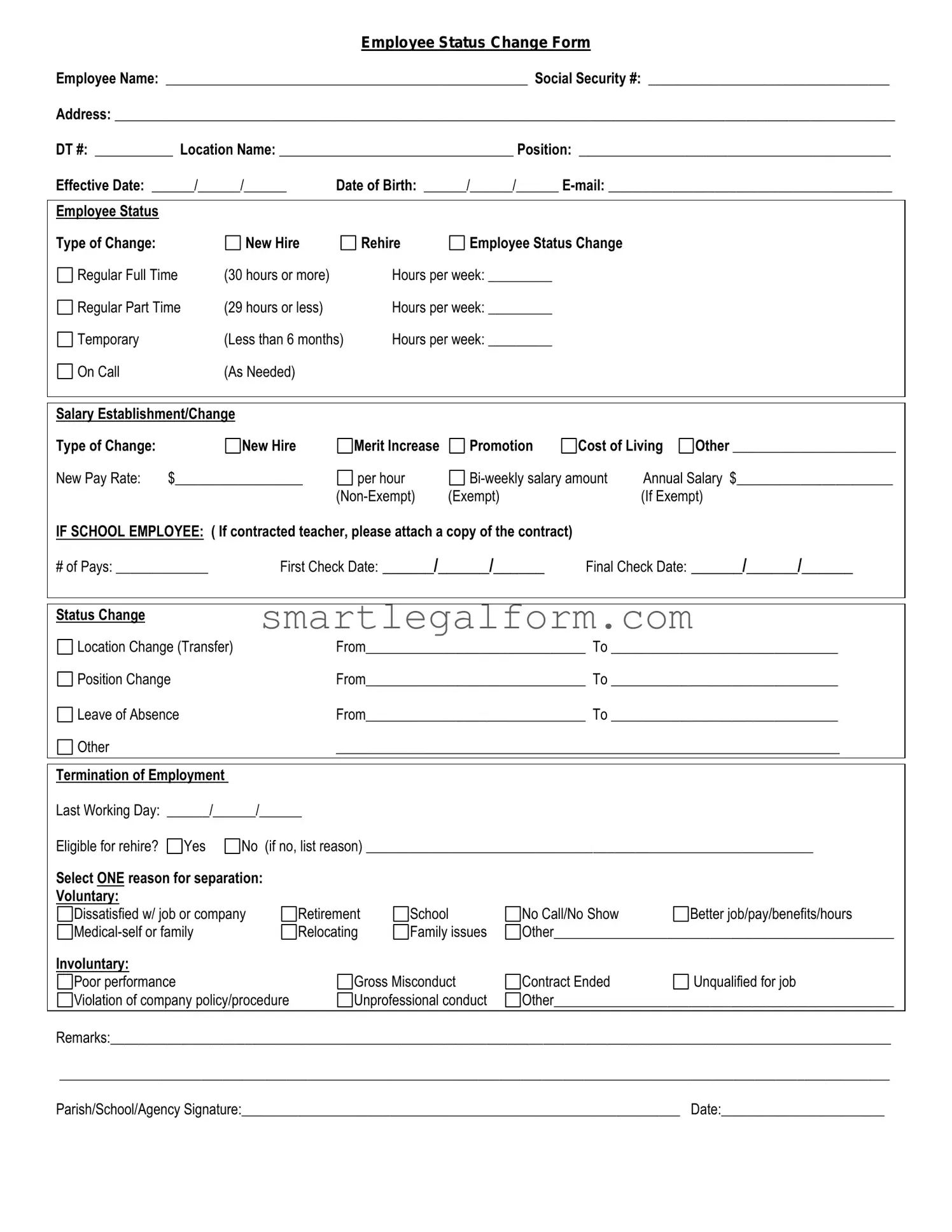Completing the Employee Status Change form can be a straightforward process, but many individuals encounter common pitfalls that can lead to delays or complications. Understanding these mistakes can help ensure that your submission is accurate and timely. Here are seven frequent errors to watch out for.
One common mistake is failing to provide complete information. It’s essential to fill in all required fields thoroughly. Omitting details, such as a current address or employee ID, can result in processing delays. Always double-check that every section is filled out completely before submitting the form.
Another frequent issue is not updating the contact information. When a change in status occurs, it’s crucial to ensure that your contact details are current. If your phone number or email address has changed, provide the new information. This helps the HR department reach you if they need to discuss your status change.
Many individuals also overlook the importance of signatures. A form may require your signature to validate the information provided. Without a signature, the form may be considered incomplete, which can lead to unnecessary delays in processing your request.
Additionally, not adhering to deadlines can be a significant setback. Each organization typically has specific timelines for submitting status change forms. Failing to submit your form within the designated timeframe may result in your request being denied or postponed.
Another mistake people often make is neglecting to keep a copy of the submitted form. It’s wise to retain a copy for your records. This ensures that you have a reference point in case any questions arise regarding your status change or if you need to follow up.
Some individuals also forget to review the company policies related to employee status changes. Familiarizing yourself with these policies can provide valuable insight into the process and help you avoid mistakes. Each organization may have unique requirements that you need to follow.
Finally, many people rush through the process and fail to proofread their forms. Simple typographical errors can lead to misunderstandings or miscommunication. Taking a moment to review your form can make a significant difference in the outcome of your request.
By being aware of these common mistakes, you can approach the Employee Status Change form with confidence. A careful and thoughtful submission will help ensure that your change is processed smoothly and efficiently.

